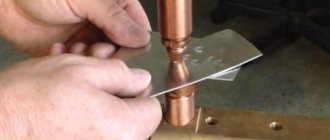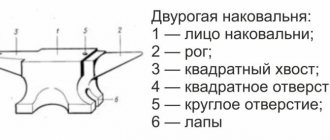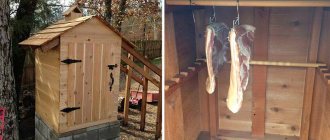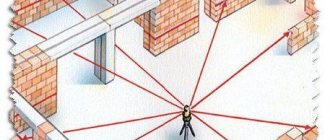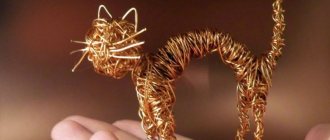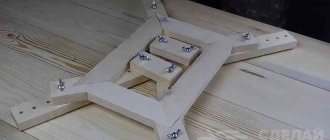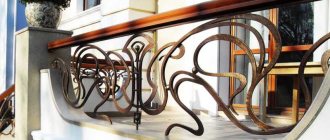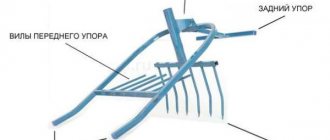Set of socks, Omsa socks
349 ₽ More details
Set of socks, Omsa socks
349 ₽ More details
Basin faucets
Crafts made from plexiglass are becoming more and more popular. This beautiful and pliable material is suitable for making figurines, photo frames and other interesting and beautiful things. In this material we will tell you how to make a price tag holder and a phone stand from plexiglass.
Methods for producing plexiglass
The production of organic glass is popular in many countries: Russia, France, Germany, England, Holland, Thailand. It is named so because its appearance and use are similar to ordinary silicate, with the only difference being that it is made from organic chemical products.
Plexiglas is a sheet of transparent solid synthetic material, which contains various organic polymers that give it certain properties: polyacrylate, polycarbonate, polystyrene and others. It is also called plex, acrylic glass and PMMA. It is quite durable and surprisingly flexible.
There are two known technologies for producing organic glass:
Between two sheets of silicate glass, used as a special mold for the production of plexiglass, a monomer mixed with certain components, hardeners, and dyes is poured. Elastic pads are also placed there, the thickness of which determines the thickness of the future product. After block or sheet polymerization, solid plexiglass is obtained, which is then given the required dimensions.
It is thanks to purified silicate glass that it is possible to achieve a perfectly smooth surface of the material with excellent optical characteristics. Molded plexiglass also has excellent elasticity and can be used in any temperature conditions. Available in colored, transparent, colorless and even fluorescent.
To avoid shrinkage of the reaction mass of the material during production, which entails the formation of defects on glass sheets, the extrusion method is used. This type differs from the previous one in the continuous, fully automated production of plexiglass on special production lines (units).
The prepared raw materials in the form of special granules are loaded into an extrusion apparatus, during the processing of which the polymer inside is heated, turning into a liquid viscous mass. At the next stage, the resulting mixture is squeezed out under pressure onto calender units.
Next, the parameters of the sheet material, shape, and surface type can be either simple or embossed. Working with such glass is much easier, since it is lighter and does not require strong heating, but at the same time it requires more consumables than cast glass. Therefore, the use of this method is more rational for organizing large-scale production.
Properties
The method of manufacturing organic glass affects its performance. Since plexiglass is an absolutely safe eco-material that does not produce toxins, its use is permitted both outdoors and indoors, including a variety of medical and children's institutions.
Acrylic glass lends itself perfectly to vacuum and mechanical processing: molding, cutting, drilling, bending, engraving, gluing and painting. Plexiglas is the best alternative to simple glass, because even if broken it is not dangerous. Maintenance is simple and is carried out using special means.
Additional qualities:
- recyclability;
- high strength;
- inertness to various types of reagents;
- good dielectric, heat and sound insulation properties;
- clear image;
- weather resistance;
- durability.
Technical plexiglass should be stored indoors with an optimal level of humidity in the manufacturer's packaging.
www.stroyservice.ru
Peculiarities
Plexiglas belongs to the category of environmentally friendly and safe materials. It is lightweight and can be easily shaped into any shape without affecting its optical properties. Regarding technical characteristics, it should be noted that the material can be processed using equipment such as saws, routers and grinders. High thermoplasticity allows the use of plexiglass in different areas. The material is durable and also has a number of advantages.
Compared to ordinary glass, sheet organic material is more durable and not so easy to break, which is why many things today are made from it. The material can be processed, products of any shape can be created from it, so it can often be found in furniture structures and other interior items. Due to its low weight, the transportation process is simplified, and the same can be said for ease of installation.
The degree of transparency of plexiglass is high; it can be combined with pigments of different colors, obtaining an original effect, which is actively used by many designers. Regarding resistance to chemical influences and temperature changes, organic glass cannot maintain its integrity in such conditions. It is necessary to care for products made from such material carefully, using products that do not contain acetone or alcohol. Despite such minor disadvantages, acrylic plexiglass has many more advantages, which allows it to be used by manufacturers of various products and designs.
What is plexiglass used for?
Plexiglas is a synthetic polymer, transparent, hard. It is used for various household needs. With its help you can create an original interior design. This material comes in two types: extruded and cast. Transparent sheets can be painted in different colors. Plexiglas can easily transmit ultraviolet rays through itself or scatter them. You can make many useful and necessary things from such material. It is often used in construction, as well as for creating advertising structures and office signs.
Cast plexiglass can be easily processed and is impact resistant. The color range is very wide. As for extruded plexiglass, its color range is not so diverse. With the help of plexiglass, you can turn your home or office into a room that you won’t want to leave. It's nice to see bright surfaces in the interior that can reflect or transmit light. If you use ordinary glass in the interior, it will look less impressive. You can create stunning design elements using plexiglass.
What are the advantages of organic glass over regular glass? The first has less mass, is easy to work with, and can be given the desired shape. It is quite difficult to cut out the desired shape from ordinary glass; it breaks and cracks easily. Plexiglas is absolutely environmentally friendly, so it can be used at home and at work. It does not produce any harmful fumes. This material is moisture resistant, it is quite durable, it is difficult to damage, the color is durable and will not fade over time.
Plexiglas is widely used in the manufacture of furniture and for finishing rooms. When purchasing organic glass, you should consider the purposes for which it will be used. Can be used as wall partitions. There are tiles made from this material that can be used to decorate floors and walls. There is plexiglass of different thicknesses. Depending on the application, you can choose a thinner or thicker material. Light transmittance indicators are important. The material may have decorative elements.
There is a great demand for plexiglass (you can read more on the website - https://www.anteyplex.ru), as it is often used in renovations to create a fashionable interior design. C
yablor.ru
Plexiglas: advantages and disadvantages
Plexiglas, like any other material, has its disadvantages and advantages, which will be discussed further.
Let's start with the advantages of plexiglass:
- due to the fact that this material is resistant to bacteria, microorganisms and moisture, it becomes possible to manufacture aquariums from plexiglass and use it in glazing yachts;
- plexiglass boasts high light permeability (about 92%), which remains unchanged even over time (at the same time, the color of plexiglass also remains constant, meaning colored plexiglass);
- due to the fact that plexiglass weighs half as much as ordinary glass, when installing it there is no need to erect additional supports, which gives more scope for design delights;
- processing of plexiglass can be very diverse, so in this case milling, turning, gluing, stamping, and polishing of plexiglass is provided;
- Laser cutting of plexiglass makes it possible to make installations from this material that are complex in shape and have very fine detail;
- cutting plexiglass and its combustion does not cause the release of any substances harmful to the human body;
- a sheet of plexiglass is 5 times more resistant to mechanical damage (impact) than a sheet of ordinary glass;
- cutting, processing and bending plexiglass is as easy as similar woodworking;
- plexiglass is resistant to various chemicals;
- plexiglass has electrical insulating properties;
- plexiglass is frost-resistant;
- this material is environmentally friendly;
- Plexiglas must be recycled.
Now let’s look at the main disadvantages of plexiglass:
- When vacuuming and thermal vacuum forming of plexiglass products, technological problems often arise;
- plexiglass is a material that is prone to surface damage;
- plexiglass is a flammable material.
How to make plexiglass with your own hands at home
Plexiglas is a special synthetic polymer, a transparent thermoplastic plastic, which is sold under various brands. The most common name for plexiglass is acrylic. This material consists entirely of thermoplastic resin.
This material is only conventionally called glass; in fact, it belongs to a different class of substances. The name of the material speaks about this. The properties of this material, and, consequently, the scope of application are absolutely incomparable with ordinary glass in the vast majority of parameters. Despite this, plexiglass has its advantages. It is used as an alternative to silicate glass.
Plexiglas is a fairly popular and in-demand material. This is explained by its unique properties - plasticity, lightness, transparency, impact resistance, etc. This material has become a real revolutionary in construction, instrument and mechanical engineering. Currently, plexiglass is used in modeling, medicine, lighting engineering, the watch and automotive industries, rocketry, aviation, and the production of military equipment.
Despite the fact that prices for plexiglass are acceptable to most residents of our country, many people wonder how to make plexiglass.
Unfortunately, it is almost impossible to make plexiglass at home. This material can be produced in two ways - casting and extrusion.
Extrusion plexiglass can only be obtained through the continuous extrusion of molten PMMA granules through a special slotted head, with further mandatory cooling, as well as cutting according to pre-specified parameters.
Cast plexiglass (in Europe it is customary to call it block glass) is obtained after pouring a special MMA monomer between flat glasses. Subsequently, the material polymerizes until it becomes solid.
The production process itself is performed on special industrial equipment. Therefore, it is almost impossible to make plexiglass with your own hands. In addition, if this succeeds, then its cost will be almost higher than the purchased finished material.
www.unikumplast.ru
General instructions
Now let's look at how to make simple but very useful things from plexiglass: a price tag holder and a phone stand.
Preparing tools
To work with plexiglass you will need the following tools:
- ruler;
- knife, circular saw or jigsaw;
- weight;
- inclined stop;
- thermal cutter
You can make the cutter yourself. For this you will need:
- nitrochrome wire 0.5–1 mm thick and 30–50 cm long;
- frame;
- 12V power supply.
Thanks to a special knife for plexiglass, you can easily cut out the necessary parts from this material.
The wire is fixed to the frame and connected to a power source. This device is needed to bend plexiglass.
Draw exact diagrams of the workpieces in advance: an error of 1 cm can make the item unusable. Both structures have vertical parts, so the base must be secure so that they do not fall.
Making a holder for price tags
There are several types of price tag holders. For example, consider the manufacture of a tabletop. It has the following shape: an inclined vertical part extends from the base with a tight clip at the top, thanks to which the price sheet does not fall out. For such a product you will need a transparent sheet 1.5–3 mm thick.
The work is carried out like this:
- Calculate the size of the workpiece. Remember that the base, vertical part and clamp are a single rectangle. For a price tag 4 cm wide and 6 cm long, you will need a blank about 11x6 cm. The main part should be 1.5–2 mm larger than the price tag, otherwise it will be difficult to insert.
Follow the instructions for making a price tag from plexiglass, otherwise the design will not be functional - Using a circular saw or jigsaw, cut the blank from the sheet. If the edges are rough, smooth them out using an electric planer or polishing paste.
- Heat up the nitrochrome wire. If the workpiece has a protective film, make marks on it with a marker in the places of future bends. If there is no film, measure the distance from the edge of the workpiece to the first bend, and then place any object at the same distance from the cutter as a stop.
- First make a clamp. Place the workpiece at the future fold location above the thread. When the plexiglass heats up, carefully bend it all the way in the direction opposite to the thread.
- Place a spacer, such as a thin sheet of metal, under the edge of the bent part. Otherwise, both parts will be pressed against each other so that it will not be possible to insert even a piece of paper between them. Place a weight on top and wait for the workpiece to cool.
- Heat up the second strip and make a fold. There should be an angle of about 80° between the vertical part and the base. Attach the workpiece to the inclined stop and place a weight on the base. Wait for it to cool down. Ready!
Making a phone stand
As an example, consider creating a stand with a base, a vertical part, a bottom stop and side holders. All these parts can be rectangular or artistic.
A plexiglass phone stand is quite easy to make
For example, you can make a stand in the shape of a man with holders in the form of hands.
The stand is made as follows:
- Calculate the parameters of the workpiece and draw its diagram. It should consist of a long rectangle with two holders on the sides. If you find it difficult to cut out such a part, small parts can be glued at the end. If the length of the smartphone is about 10 cm, the vertical part, folded in half, taking into account a small margin, should account for about 22 cm, about 8 cm for the base, and 2.5 cm for the bottom stop. A total of 32.5 cm. The workpiece should be 0.5–1 cm wider than the device so that it is easy to insert and remove without scratching the edges. The side holders can be of any length and either serve as small sides or cover the phone almost the entire width.
- Cut the workpiece using a jigsaw or hand saw for metal. If the sheet thickness is no more than 2 mm, you can use a regular sharp knife.
- Heat the nitrochrome wire. Mark the required areas and begin shaping the workpiece. The bends should be as follows: 75–80° between the base and the vertical part; fold the two halves of the vertical part in half, they should be pressed tightly against each other; At the bottom we make another fold at such an angle that the remaining part of the strip is in the same plane with the base and the workpiece stands firmly on the table. Do not forget that you need to bend the workpiece in the direction opposite to the heating. After each bend, press the part against the stop and place a weight on it until it is completely cured in the desired shape.
Nichrome wire is used in plexiglass cutters as a heating element - The side holders and bottom stop can be made with right angles, but at home this is difficult due to the small size of the parts. It’s easier to give them an arched shape. Heat the parts over the thread and gently bend them towards the future location of the phone. Make sure that the lower stop does not bend down, otherwise the structure will become unstable. You can keep them on a small metal cylinder until they harden.
- Sand the edges. If desired, decorate the stand with painting, engraving, etc.
Having learned to work with plexiglass, you can even set up your own business, creating either standard inexpensive items in large quantities, or unique products that also have artistic value.
Where is frosted plexiglass used? Features of working with the material
Frosted plexiglass is a synthetic board consisting mainly of acrylic resin. Specialized compound additives provide a matte surface of the sheet. This way it becomes opaque while maintaining its previous characteristics, which opens up new possibilities for use.
Peculiarities
The degree of light transmission of a white plastic product varies from 20 to 65%, respectively, providing a transparent and translucent version. In any case, the plate has a smooth, even surface with a noticeable double-sided shine. The main feature is the formation of a protective screen when exposed to light.
Frosted plexiglass has become widespread due to its reflective characteristics in the production of light, music and lighting devices. Active use is also noted for door glazing, due to the adjustment of lighting and the inability to see what is happening behind the door. Products are often painted in green, red, blue and other shades.
Advantages
Among the positive aspects, it is worth noting the lack of special care during operation, a long period of use, ductility, reliability, wear resistance, and low weight. Due to the use of special resins during production, frosted plexiglass for the ceiling cracks and does not break as usual. Such characteristics contribute to the use as interior partitions and other elements in office premises, nightclubs and cafes.
Working with material
A tool based on a hacksaw blade greatly simplifies cutting sheets. In order to cut the product into two parts, a line is marked in the middle using a block or ruler, then you need to run a sharpened cutter along it several times. After breaking, the material is divided into two parts.
Frosted plexiglass is easily drilled without any unforeseen situations, and the final products are characterized by the absence of burrs.
Electric and manual jigsaws are convenient for working with material and allow you to obtain smooth parts. It is worth noting that the sheets heat up during the sawing process, so systematic cooling of the workpieces is required to prevent temperature deformations.
The casting technique makes it possible to obtain flexible and easy-to-use matte white plexiglass, due to which it forms more noticeable bends, which is not different from the extrusion manufacturing method. In the latter case, the material is characterized by an increased tension density, due to which the sheets become brittle and hard at the same time, which can lead to the formation of cracks or damage to the element when bending and deforming. To simplify the work, the workpieces are heated.
Use Cases
Hanging lighting elements for the ceiling with a matte finish become an original opportunity for interior decor in bathrooms, office and even residential premises. Forming a custom box can add futuristic notes to the design, as well as add elegance.
Ceiling structures made of glass with a strong matte effect create pleasant diffused lighting throughout the space, while hiding the lighting fixtures from prying eyes due to their translucent shape. Lamps of any type, including LED and filament, can serve as light sources.
How to make plexiglass frosted
Sandpaper with a fine-grained structure allows for mechanical matting of the material. A piece of paper measuring at least 5x5 cm is suitable for this. All work must be carried out using protective gloves. To prevent fatigue, you can work with your right and left hands alternately. Once the product has achieved the desired matte surface, the processing is completed.
You can safely and quickly obtain frosted plexiglass by applying a thin layer of white paint to the inside of the structure. At the same time, you should not use sandblasting devices and specialized matting compounds, since they are created for ordinary glass.
The chemical method requires more caution and concentration. With its help, it is possible to process small elements that are completely placed in an acid-resistant cuvette. It is important to ensure proper ventilation or exposure to open air during work. The plexiglass part is filled with formic acid and left for 30 minutes, while it is necessary to systematically mix the liquid using a steel rod. Afterwards, the plexiglass is removed from the vessel, washed and left to dry. For this process, it is mandatory to use personal protective equipment and tweezers to remove the sheet.
fb.ru
Classification of frosted plexiglass
There are several types of frosted plexiglass:
- Colored. The composition contains a coloring component, and the surface can be either smooth or rough.
The surface of colored matte plexiglass can be either rough or smooth - Satin. The matte effect is achieved due to the roughness of one or both sides, while there may be no dye in the material itself. Minor damage is almost invisible.
- Glossy. Both sides are smooth. The material itself is milky in color, its saturation can vary from slightly transparent to opaque. It looks attractive, but chips and scratches are clearly visible on the surface, as well as grease and dirty handprints.
- Grooved. There is a distinct raised pattern on one side. Can be white or colored.

